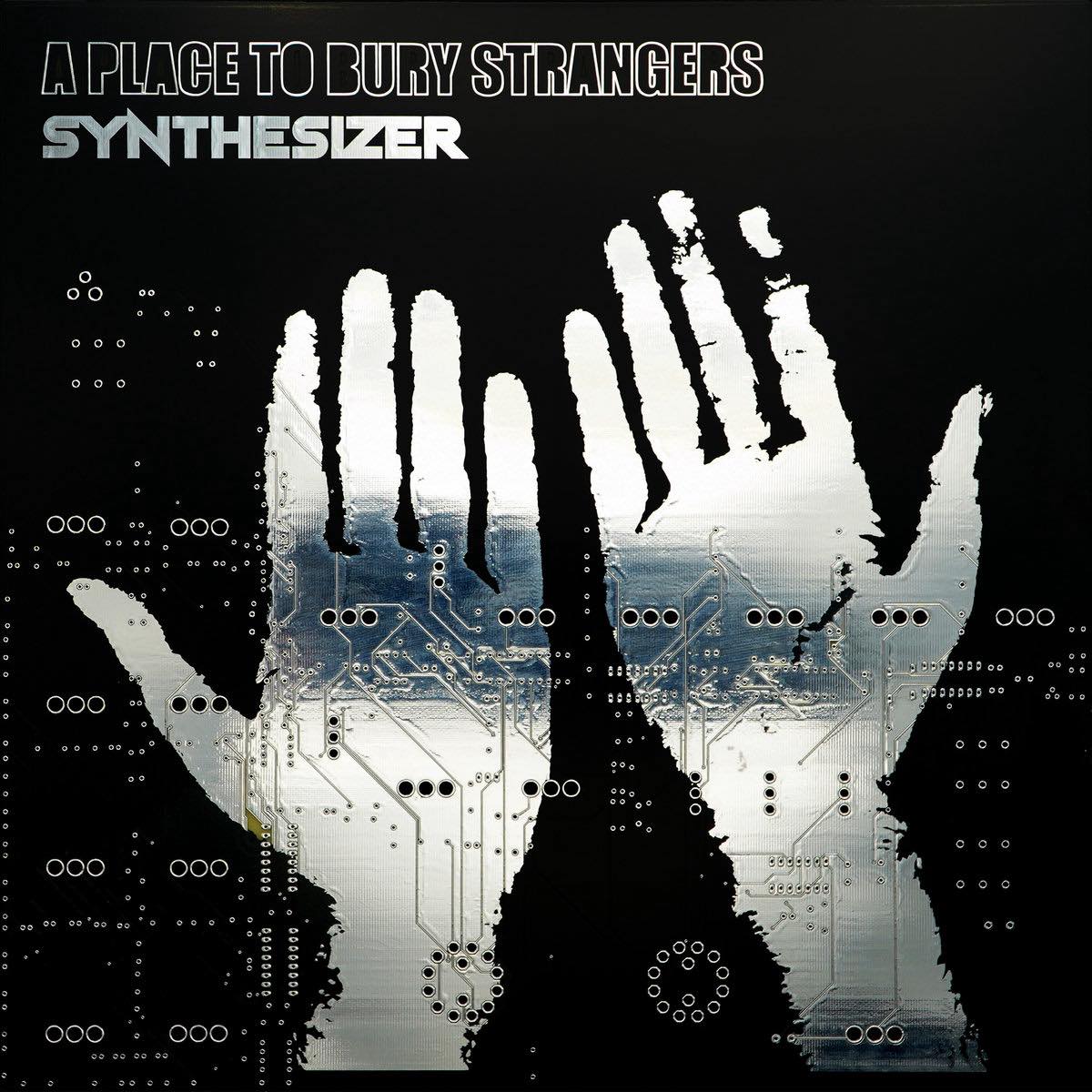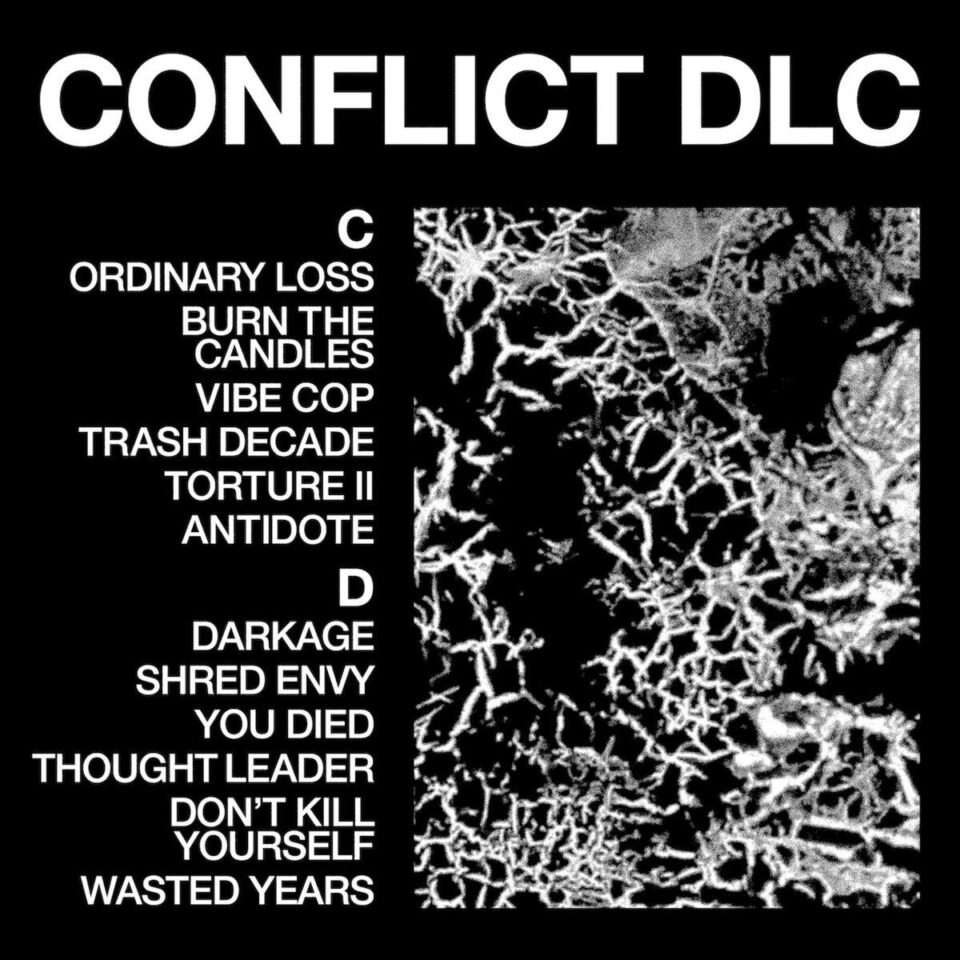A Place to Bury Strangers
Synthesizer
DEDSTRANGE
It seems Guinness-worthy that 47-year-old guitarist/vocalist Oliver Ackermann is still widely considered to be one of the most hyperactive and bombastic musicians in Brooklyn, an unofficial designation he’s held for the past 20 years or so. His off-the-charts energy levels have brought a decent amount of good fortune his way: He became a member of well-respected noise-shoegazers A Place to Bury Strangers in 2003, and around the same time he founded an effects-pedal company called Death by Audio which, like his band, is still thriving. Yet in spite of his success fronting the so-called loudest band on the East Coast, this doesn’t mean he’s immune from issues like anxiety and trauma—maladies he’s figured out how to help others cope with by creating art that might provide critical support.
Like most good album names worth their salt, Synthesizer, the title of the band’s seventh studio album, could be interpreted in multiple ways. Is it merely a nod to the instrument? A reference to the combination of chemicals used to create a new compound? Sure, maybe. But a close listen to each of the songs on the album, combined with the ambitious emotional range Ackermann and his bandmates imbue on the record, could imply that Synthesizer is a way of processing and expelling emotions in a healthy and safe fashion so they don’t join forces with grief, anger, or hatred and defeat us the only way they can: from inside our bodies.
However there isn’t any evidence on Synthesizer that Ackermann is striving for Zen here—a punk-rocker at heart, he seems to favor letting his freak flag fly. Speaking with Ackermann back in February, he told me that he wants “to feel totally out of control” at his concerts. “That’s the dream state for me, at least while playing music.” That approach to performing live might seem dangerous to some, but the way Ackermann intimates his reckless physical activity at his band’s shows, it seemed much more likely that he uses his body as a vehicle to exorcise anxiety, sorrow, anger, and the like—all while simultaneously entertaining the crowd with unpredictable behavior.
Ackermann is much more transparent in his lyrics than he was on the band’s previous releases. He wears his heart on his sleeve from the start of Synthesizer through to its conclusion, as the record touches all the bases of human emotion. Each of the 10 songs are quite distinct in both style and substance, allowing him to tap into his emotional self as if he were looking at it through a kaleidoscope he slowly twists (the one exception being the fourth track, “Join the Crowd,” where Ackermann passes the mic to drummer Sandra Fedowitz). He both brazenly and bravely plants a devastating song about heartbreak as the opening track, with the lyrics to “Disgust” being as stark and real as they can get. Reminding us that they’ve been at this for a while, A Place to Bury Strangers balance their emotionally charged songs with shots of humor, humility, and charisma.
Meanwhile, Ackermann finds yet more new ways to manipulate the sounds that his guitar and the effects pedals produce. His tinkering might seem elementary at times, until it hits the listener that he’s created almost entirely new textures for each track. “It’s Too Much” is a song that invites people who don’t know how to dance to enjoy taking a stab at it. “Plastic Future” and “Have You Ever Been in Love” evoke Joy Division, albeit without the all-consuming depressive state that made Ian Curtis’ vocals so deeply affecting. Closer “Comfort Never Comes” is a slow and (ironically) comforting epic of sorts that leaves the listener with a reminder to make sure we’re always trying to improve ourselves by admitting our flaws and attempting to rectify them as best we can.
Which brings us to the last 30 seconds of the album, a slow fade that dissolves into the ether. Why end a predominantly boisterous record on such a tame note? Because Ackermann, and hopefully his listeners, have successfully purged the toxins from their bodies over the course of the 42-minute opus. What remains is equilibrium, relief—and the sense of peace and tranquility that prompted A Place to Bury Strangers to create Synthesizer in the first place. Mission very much accomplished.







